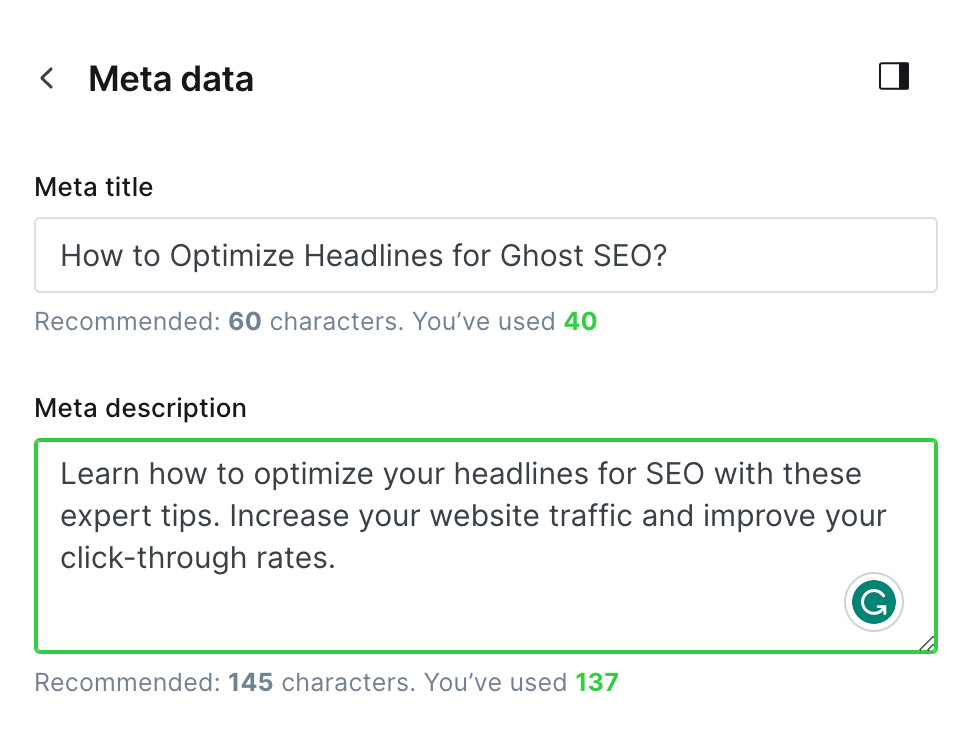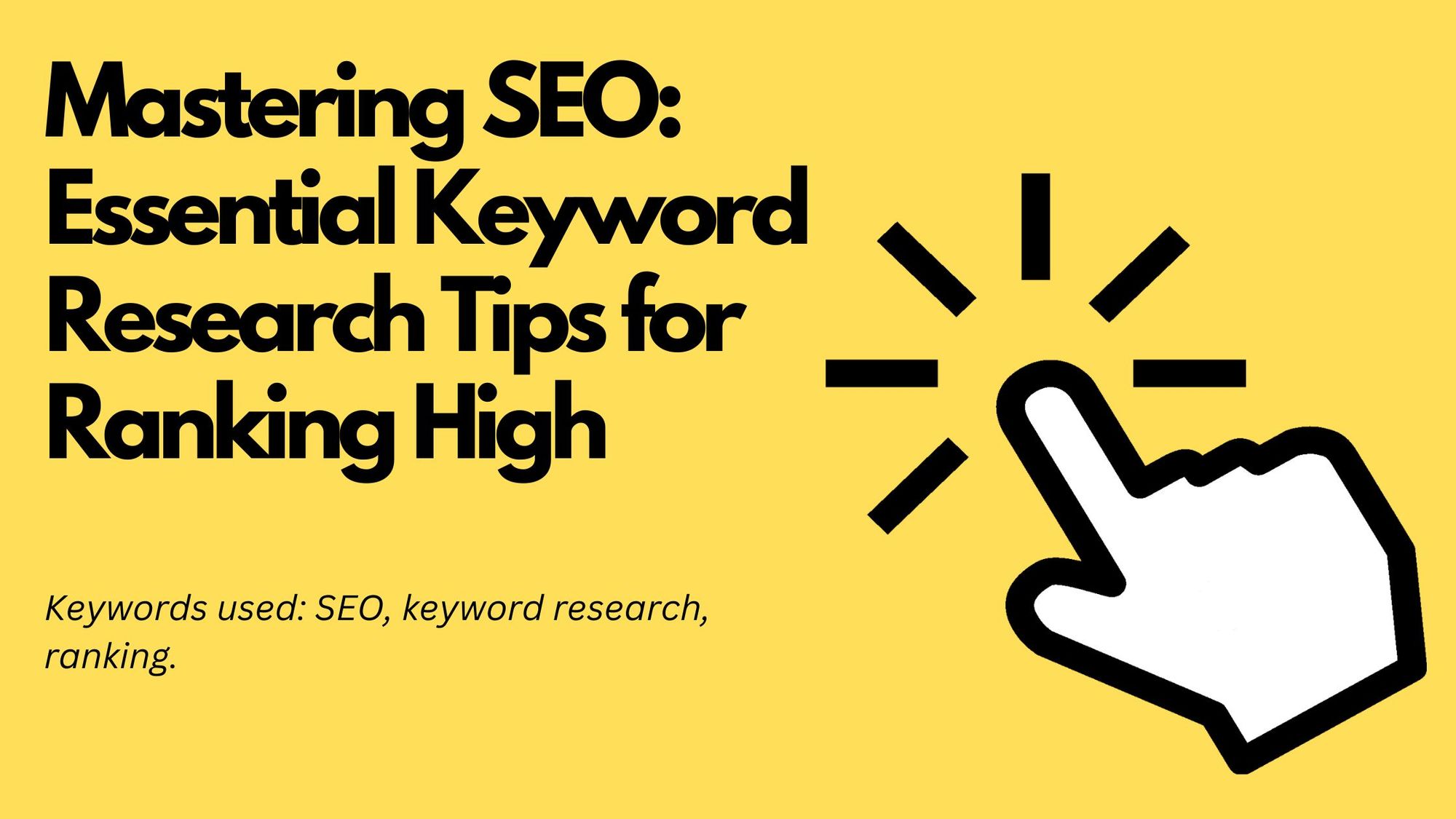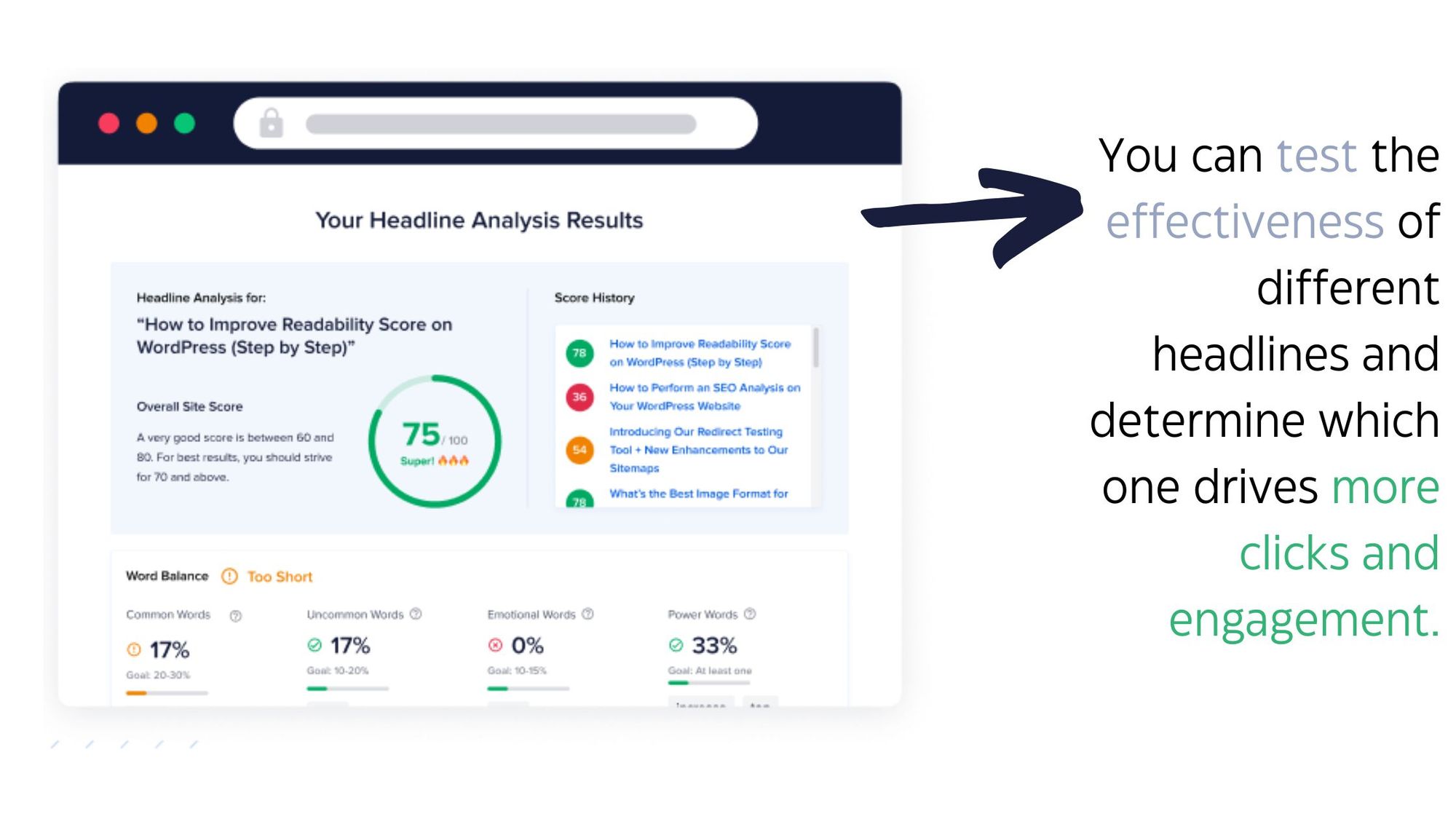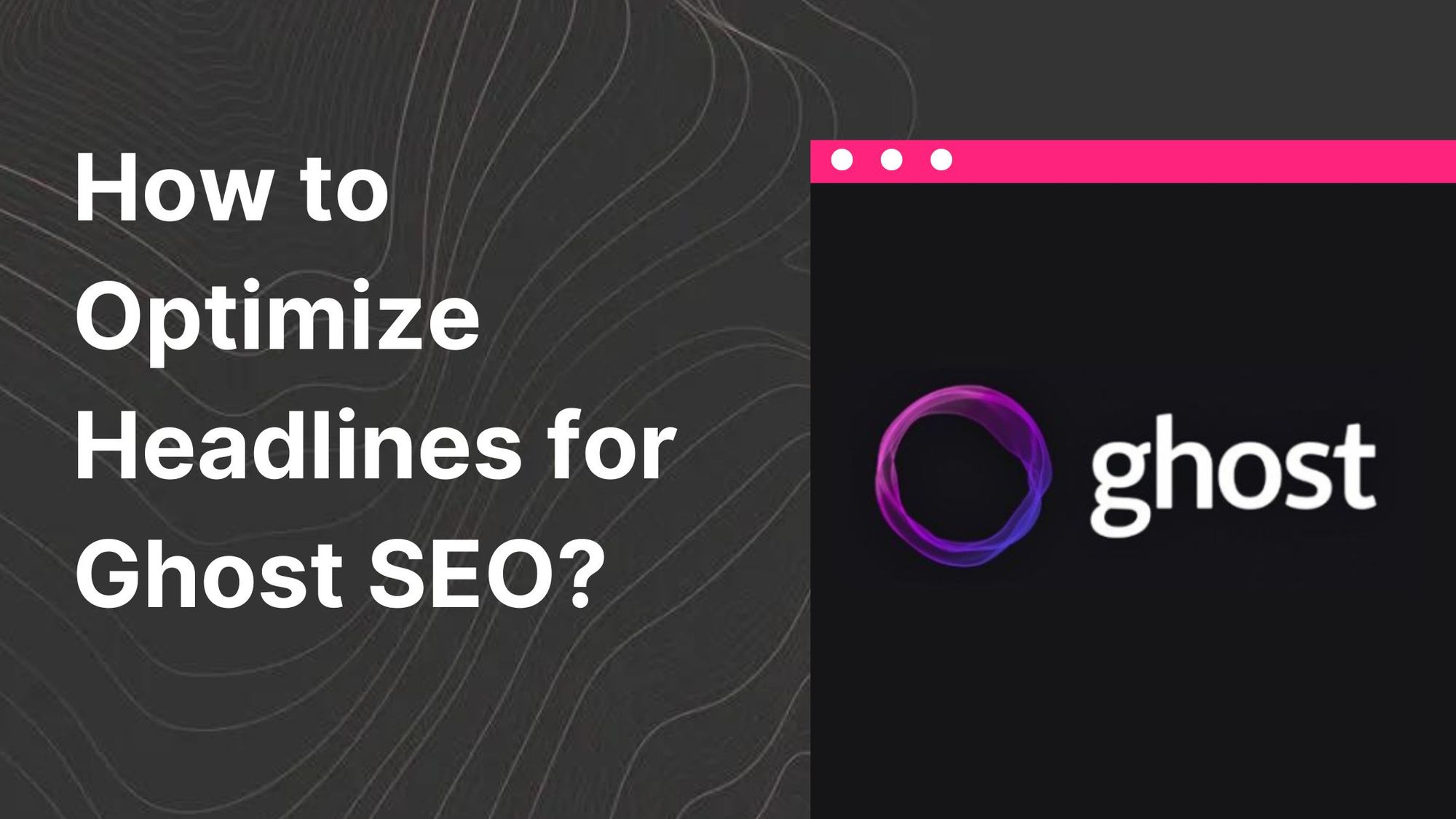In this blog post, we will provide practical tips and guidelines for optimizing headlines for SEO on Ghost.
We will cover various aspects of headline optimization, including keyword research, headline structure, length, and formatting, and provide real-world examples of effective headlines that have helped drive traffic to Ghost websites.
Whether you are a blogger, content marketer, or SEO professional, this article will help you understand how to write headlines that attract clicks and improve your website's search engine rankings.
What are Headlines? Why are they important for SEO?
Headlines, also known as titles, are brief summaries or descriptions of the following content. They are the first thing readers see and help them decide whether or not to click and read the rest of the article.
A well-crafted headline that includes targeted keywords can increase the chances of your content appearing higher in search engine results pages (SERPs), which can lead to more traffic to your website.
A strong headline can also improve click-through rates (CTR) and engagement with your content, ultimately helping to achieve your content marketing goals.
So, a headline that is;
- catchy
- helpful
- well-crafted
- simple yet effective
Will get you where you want.
How to Optimize Your Headlines: Ghost SEO
Let's look into ghost optimization for SEO and how you can use headlines in Ghost blog posts.
1) Meta Title and Description in Ghost SEO
When it comes to optimizing your blog post for search engines using Ghost SEO, the meta title is a critical factor that can impact the success of your content.
Ghost SEO offers a customizable meta title feature that allows you to create clear and impactful titles for your blog posts.
Ghost SEO also allows you to include relevant keywords in your meta title, which helps search engines understand what your content is about and improves the likelihood that it will be shown to relevant searchers.

By taking advantage of Ghost SEO's customizable meta title feature, you can create compelling titles that will attract the right audience to your content and improve its overall success.
2) Headline Tags in Ghost SEO

By using title tags, the content of the page is displayed more clearly, and the hierarchy between paragraphs is also shown.
This hierarchy helps readers to easily identify what comes first and what the different sections of the page are.
Ghost SEO has built-in optimization for H1, H2, and H3 tags, which are HTML tags that define the headings and subheadings in your content.
By using these tags properly, you can help search engines understand the structure and hierarchy of your content, which can improve your website's search engine ranking.
If you want to know more about header tags, watch Header Tags SEO - How To Use H1, H2 & H3 Tags Properly
3) Code Injection and Headlines in Ghost SEO
Code injection in Ghost SEO allows you to add custom code to your website's theme, including code that can be used to modify the appearance and behavior of your headlines.
This can be particularly useful if you want to add advanced functionality or styling to your headlines that is not provided by default in the Ghost platform.
For example, you can use code injection to add custom CSS styles to your H1, H2, and H3 tags to change the font, color, size, and other visual elements of your headlines.
Code injection in Ghost SEO can be accessed from the Ghost admin panel under the "Code Injection" tab. Here, you can add custom code to the "Site Header" or "Site Footer" sections to apply changes to your website's theme.
Watch Ghost CMS - Code Injection to learn more.
Tips for Attention-Grabbing Headlines
Let's look into some tips for headline optimization that will be useful for you in the future.
1) Optimizing Headlines with Keywords

Use acquired keywords or questions relevant to your topic to get more;
- traffic,
- and attention.
To get more clicks to your website, your headlines should be both attention-grabbing and informative. This means that your headline needs to pique the reader's interest and clearly convey the problem that your content solves.
However, it's important to avoid overusing keywords, as keyword stuffing can actually hurt your SEO. Instead, aim to incorporate keywords naturally into your headline and content, so that they blend seamlessly with the rest of the text.
2) Keep it Simple
Keep your headline short and to the point. Avoid lengthy and wordy headlines that may confuse readers and search engines.

Crafting a great headline can be a challenging task, but keeping it simple can often be the key to success. Your headline needs to be clear, concise, and attention-grabbing.
It should immediately communicate the value of your content to the reader, while also enticing them to click through and read more.
On average, five times as many people read the headline as read the body copy. When you have written your headline, you have spent eighty cents out of your dollar. -David Ogilvy
By incorporating relevant keywords into your headlines, you can boost your search engine ranking and attract even more readers.
Remember to keep your headlines simple and effective, and to always put yourself in the reader's shoes when crafting your titles.
3) Use Numbers and Experience
Numbers in headlines are used more often these days because it attracts readers' attention and makes them more likely to click through. For example, "10 Tips for Better SEO Optimization."
Or to make the reader trust you more by adding your research hours or your experience in the related field to show you are an expert on the issue.

Such as;
- Expert-Backed Tips for Improving Your Headline Writing: Insights from 10+ Years of Experience
- The Science of Crafting Trustworthy Headlines: Insights from 50+ Hours of Research
4) Clickbait Headlines and Why They Are Bad for Your SEO Optimization
Clickbait is not a good way to start your blog. Yes, it fills out two criteria;
- eye-catchy
- simple
- effective
But, using clickbait in a title can be bad news because it can create a negative user experience for readers. Clickbait headlines often make exaggerated or misleading claims to entice readers to click but fail to deliver on those promises within the content itself.
The title given as an example is designed to entice readers to click and find out what the woman discovered, but it doesn't necessarily deliver on any substantive promises or provide much value to the reader beyond a sensationalized headline.

- This can lead to frustration and disappointment for readers, who may feel like they wasted their time clicking through to a page that didn't meet their expectations.
- In addition, clickbait can also damage the credibility and trustworthiness of a website or publisher, as readers may become skeptical of future headlines and content.
For these reasons, it's generally best to avoid using clickbait tactics in headlines and instead focus on writing clear, accurate, and compelling titles that accurately reflect the content of the article.
5) Perfecting Headline Strategy: Iterative Testing
Testing and refining headlines are crucial for improving their performance in terms of SEO and click-through rates.
Continuously monitoring and analyzing the performance of your headlines using tools like Google Analytics or A/B testing can help you identify what works and what doesn't.

Use data to your advantage and adjust your headlines accordingly, incorporating the most effective keywords, phrasing, and structure.
Some tips for refining headlines based on performance data include keeping headlines concise and specific, focusing on the reader's perspective, and using powerful words to elicit emotional responses.
By continually testing and refining your headlines, you can improve their effectiveness and ultimately drive more traffic to your website.
Conclusion
In conclusion, optimizing headlines for SEO is an important part of driving traffic to your website. By creating eye-catching and relevant headlines that incorporate relevant keywords and provide value to your readers, you can improve your search engine rankings and attract more visitors to your site.
It's also important to continually test and refine your headlines, using tools like A/B testing to determine which versions perform better and adjust your approach accordingly.
By following these tips and staying up-to-date on the latest SEO best practices, you can ensure that your headlines are optimized for maximum impact and engagement.
If you found this article useful, be sure to check out our other blog posts on SEO for even more tips and insights. Happy reading!
FAQ: Headline Optimization for SEO
Q1: What are Headlines?
A1: Headlines are the titles or headings of your content, such as blog posts or articles. They are typically displayed at the top of the content and serve as a brief summary or introduction to what the content is about. Headlines are important for SEO because they are one of the first things that search engines and readers see when they come across your content.
Q2: What is headline optimization?
A2: Headline optimization is the process of crafting headlines for articles or web pages that are both attention-grabbing and optimized for search engines.
Q3: Why is headline optimization important for SEO?
A3: Headline optimization is important for SEO because search engines use headlines as a key factor in determining the relevance and quality of a webpage. A well-optimized headline can help improve a webpage's search engine ranking and drive more traffic to the site.
Q4: How do I optimize headlines for SEO?
A4: To optimize headlines for SEO, you should use relevant keywords in your headline, keep it concise and clear, use attention-grabbing language, and ensure that the headline accurately reflects the content of the page. It's also important to test and refine headlines over time to see which ones perform best.
Q5: Should I prioritize SEO or reader engagement when optimizing headlines?
A5: Ideally, you should aim to strike a balance between optimizing for SEO and engaging your readers. Your headline should be both keyword-rich and attention-grabbing, while also accurately reflecting the content of the page.
Q6: Are there any tools that can help with headline optimization?
A6: Yes, there are many tools available that can help with headline optimization, such as Google Analytics, A/B testing tools, and headline analyzer tools. These tools can help you monitor and analyze the performance of your headlines and make data-driven decisions to optimize them for SEO.


